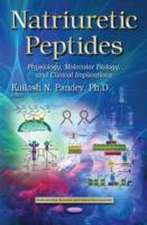Disorders of Blood Sugar
Autor Roberto Victor Illa M. D.en Limba Engleză Paperback
Preț: 481.33 lei
Preț vechi: 506.67 lei
-5% Nou
Puncte Express: 722
Preț estimativ în valută:
92.13€ • 100.11$ • 77.44£
92.13€ • 100.11$ • 77.44£
Carte disponibilă
Livrare economică 31 martie-14 aprilie
Preluare comenzi: 021 569.72.76
Specificații
ISBN-13: 9781481117838
ISBN-10: 1481117831
Pagini: 278
Dimensiuni: 203 x 254 x 18 mm
Greutate: 0.56 kg
Editura: CreateSpace Independent Publishing Platform
ISBN-10: 1481117831
Pagini: 278
Dimensiuni: 203 x 254 x 18 mm
Greutate: 0.56 kg
Editura: CreateSpace Independent Publishing Platform

























